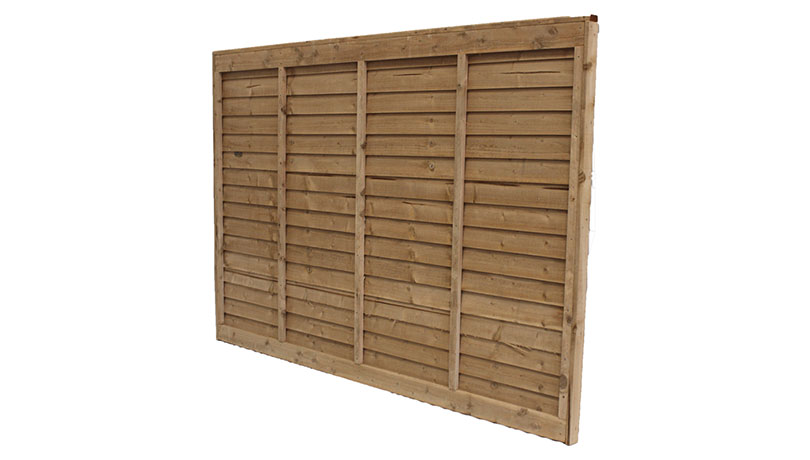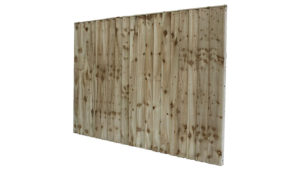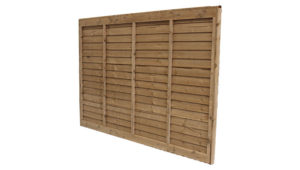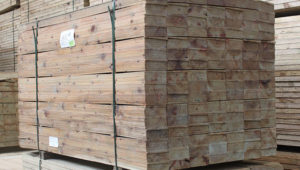
24 Oct Guide To Replacing A Timber Fence
There are many reasons why you might want to replace your timber fence. Perhaps it’s been damaged by severe weather, is rotting, or has simply reached the end of its life. Whatever the reason, if you’re thinking of replacing your timber fence panels, you’ll need to decide which type of fence to go for. In this blog post, we’ll give you a guide to replacing a timber fence with closeboard, overlap, or feather edge.
Replacing a Timber Fence with Closeboard
If your timber fence is in good condition but needs a facelift, then closeboard fence panels could be the ideal option for you. Closeboard is a popular choice for those wanting to maintain privacy as it’s made up of overlapping panels. It’s also long-lasting and relatively easy to install.
To replace your timber fence with closeboard panels, you’ll first need to remove any existing fence panels and posts. Once this is done, you can start installing your new closeboard fence by nailing vertical battens to the front of your posts. To make things easier, we recommend using pre-assembled closeboard timber panels. Once your panels are in place, simply nail horizontal cap railings to the top of the vertical battens.

All of our standard panels are 1.8m (6ft) wide and come in a range of heights 3ft, 4ft, 5ft and 6ft. All of our panels are made on-site by Brookridge Timber staff and are manufactured from high-pressure treated components giving extra protection.
Replacing a Timber Fence with Overlap Timber Fence Panels
Overlap fencing is one of the most popular types of fencing as it’s both affordable and easy to install. If you’re on a tight budget or are looking for a quick replacement for your timber fence, then overlap fence panels could be the right choice for you. However, please bear in mind that overlap fences aren’t as durable as other options and may need to be replaced more frequently.

To replace an overlap timber fence, begin by removing all existing panels and posts. Once this is done, simply slot your new overlap fencing panels into place and use wooden stakes to secure them at the bottom. To finish things off, screw two panel clips onto each post and make sure that they’re flush against the panel so that it’s nice and secure.
Replacing a Timber Fence with Feather Edge
Timber feather edge fencing is similar to closeboard but uses thinner boards which are overlapped lengthways rather than widthways. This gives feather edge fences a more traditional look which makes them popular with those wanting a classic feel for their garden. They’re also extremely durable as they’re less likely to warp or bow over time.

The process for replacing a timber fence with feather edge boards is similar to that of closeboard; however, instead of using pre-assembled panels, you’ll need to create your own using individual timber feather edge boards. Begin by measuring and cutting your boards to size before nailing them in place on the front of your posts. Once all boards are in place, simply nail on some capping rails at the top (optional) and you’re good to go!
Our range of featheredge fence boards are sawn from UK spruce and are manufactured to ensure every board is of equal size for ease of construction, and we would advise adding a 25 x 150mm gravel board at the base and a rebated capping to the top of the boards which will help to increase the life of a fence.
Timber Fencing From Brookridge Timber
There are many different types of fences available on the market today; however, when it comes to replacing a timber fence, there are three main options: closeboard, overlap, or feather edge. In this blog post, we’ve given you a guide on how to replace a timber fence with each option so that you can make an informed decision about which one is right for you. Thanks for reading!


No Comments